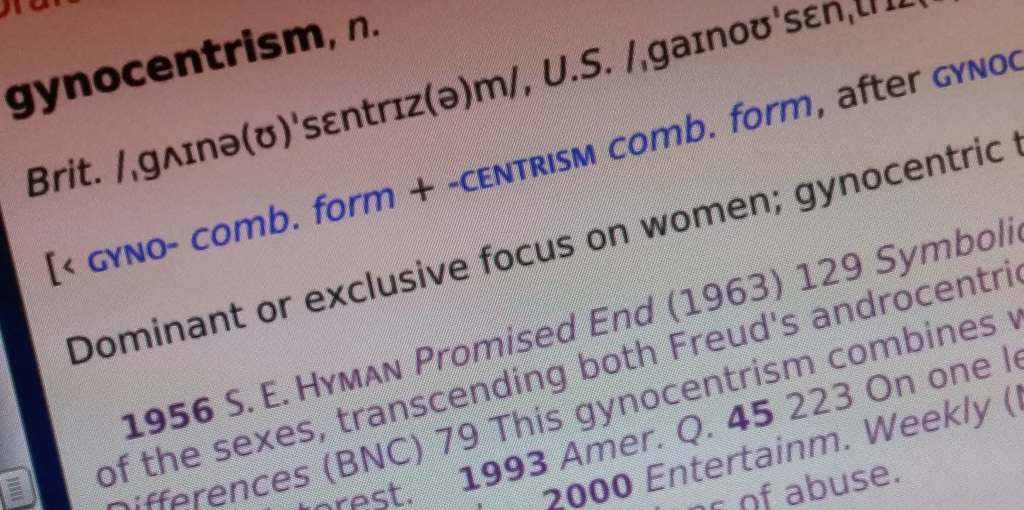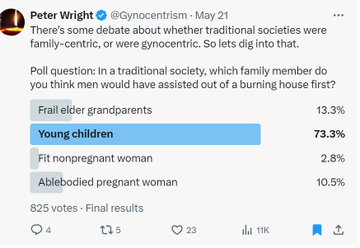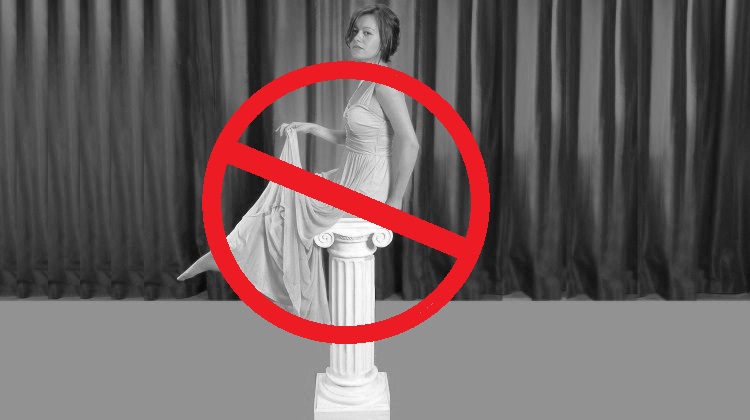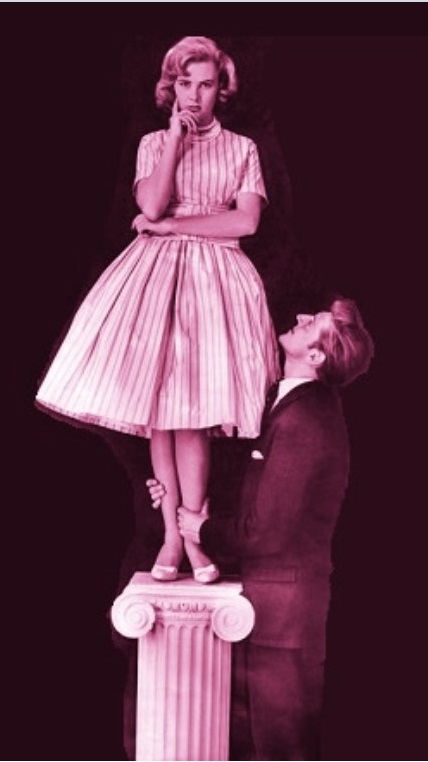
By Peter Ryan
This article is dedicated to the multiple men that I have known who have committed suicide or attempted to commit suicide. Men always have value and something to live for, even when they think they don’t, or how they are treated by society convinces them they don’t.
Introduction:
The value of a human life is something that is not truly quantifiable. There is no one answer to the question on how much a human life is worth. It is a reality though, that each human life cannot be replaced and is in a sense priceless. The consciousness of a human being is unique to each individual human life. This article will be focusing on the biological value of men, but it is important to remember that all human life transcends biological value. We do not treat the disabled with less dignity or with no dignity because they are disabled. We understand that the value of human life that really has the ultimate meaning to us, does not come from the utility of the human body.
Every man and woman regardless of their abilities, has a unique a mind and a personality that conveys a unique contribution to the world. That is what we really miss when people die and that is what really forms the basis of human love. We acknowledge the real basis of the value of human life, when we consider brain death to be the death of a person. It is consciousness and not the utility of the body that ultimately matters to us. There will not be another person like you again. Our consciousness and the essence of who we are cannot be replaced.
We often do not realise the value of what we have until it is gone. Death can clarify the relative importance of many things for people (including me). A number of years ago, I watched two parents bury both their two sons. It was the saddest thing I have ever witnessed and understandably the parents were inconsolable. The sons died in an accident on their holiday in their mid-20s in the prime of their life. All of the hopes and dreams that their parents had for them, died that day. I can still remember the horrible wailing of the mother and the father, as two coffins proceeded to leave the church. I can still recall the upset I felt seeing someone I went to school with and knew had a promising future, being moved away in a coffin right past me and the finality of it all. You do not forget a tragic experience like that.
What do you say to parents that have just lost not one, but both of their two sons in a horrible accident? They can never be replaced. How many families have lost their sons at too early an age from suicide, from the effects of divorce, from fighting a war or fighting fires, or from an early accidental death or illness? The pain and sense of loss cannot be measured. Whilst we certainly can create abstract ways of measuring the value of both men and women in biological terms or otherwise, ultimately the value of human life is greater than the sum of its parts. The pain people feel from losing people they love, can be a powerful reminder of that reality.
Ultimately whether you are a man or a woman at the bottom of the distribution of utility and biological value, remember that your value as a human being transcends your utility and your biology. As I have said before, civilisation requires that we move beyond valuing human life based on its utility and biological characteristics. How quickly would civilisation descend into violent chaos if we began murdering the sick, the disabled and the elderly? Not long. We have seen how that turns out and the genocidal horrors that have unfolded from such thinking. Civilisation requires a basic unconditional level of respect for the sanctity of all human life, in order for it to function and be sustained.
So whilst I will be discussing the biological value of men in detail, please take the time to reflect on the reality that the value of human life is more than just what comes from biological value. Please take the time to reflect on how lucky you are to be alive and to simply exist, because we will all be dead one day. All of our problems and ideologies will mean little in our minds, when we face death in our final moments and are fighting for our last breath and we consider how tiny the length of our passage in this universe actually is. This is a large article and is divided into two parts, part one and part two. There is a great deal to discuss because of the amount of distortion of the truth and of the facts surrounding male value. I make no apologies for the length of this article, men deserve it.
The Biological Equality Of The Sexes:
In order for a phenotype of an organism to have value in biological terms, it must ensure sufficient copies of the genome that encoded it persist in future generations. A phenotype that results in greater copies of a genome existing after a thousand generations (or any other number of generations) than an alternative phenotype, is of a greater biological value to that genome and will be conserved to a greater degree. Biological value must also be defined in reference to the organisms investing in a phenotype and the payoff they receive from that investment.
Sex is a phenotype and parents invest in the male and female phenotype by producing male and female offspring. After any number of generations, each sex produces an exactly equal total number of copies of their parent’s genome. Consequently, males and females have exactly equal biological value. This is why there is an almost equal sex ratio of males and females produced at birth in the human population and many other species. It does not pay for parents to invest in one sex over the other, because neither sex has greater biological value for the parents investing in them. This reality is explained by Fishers principle1. I have described the underlying evolutionary framework behind the equal biological value of the sexes at length in part one of Gynocentrism And The Value Of Men2.
It is telling how gynocentric our society has become, when even significant numbers of people in the manosphere are convinced that women are more biologically valuable to the species because they have a uterus and think biology revolves solely or primarily around reproduction. If this truly were the case, then there would be a selective advantage from producing daughters instead of sons and female infants would outnumber male infants in the population. If reproduction was the sole or primary source of biological value, then humans and our hominid and mammalian ancestors would have eventually reverted back to asexual reproduction, or would not have evolved to sexually reproduce at all. Alternatively, our ancestors could have evolved to sexually reproduce as hermaphrodites (where all individuals of a population could gestate the fetus and fertilise each other’s eggs), or at the very least would have devolved into small mammals with high rates of reproduction. None of this has happened.
As I discussed in part one of Gynocentrism And The Value Of Men, the empirical evidence, established evolutionary theory and our evolutionary history, all point in the opposite direction to the assertion that women are the more biologically valuable sex because of their uterus and that reproduction is the overwhelming driver of evolutionary success. We have literally had hundreds of millions of years for a selective preference for the female sex to win out and yet it has not. Why? Reproduction is one event in a series of events required to propagate the genome and the uterus is just one organ required to ensure continuation of the lineage. In the complex two sex biological system our genome encodes to propagate itself, there are many other requirements that must be met to ensure continuation of the genome aside from reproduction and the uterus. Reproductive success does not ensure evolutionary success and they are not synonymous. I discussed all of this in detail particularly in part one of Gynocentrism And The Golden Uterus3 and in my further writings in part one and two on Gynocentrism And The Value Of Men.
The Sex Differences In Biological Value:
The biological value of men extends far beyond just their reproductive and genetic value in allowing sexual reproduction to occur. Males exist in our species in the form they do and contain half the human genome, precisely as a result of having equivalent biological value of their own and because reproduction is not the sole or exclusive source of biological value. The difference between males and females is not in the degree of overall biological value of each sex. The two key sexual differences in biological value, lie in the different manifestation of biological value in each sex and in the distribution of biological value among individuals of each sex. The sexes do not have to be the same to be equal in overall biological value and they do not have to be unequal in biological value to be different. This is a reality that feminists who assert that the sex differences are entirely due to socialisation and female supremacists that assert innate female biological superiority (and yes some people in the manosphere strangely hold the same belief), both fail to appreciate and understand. These principles can be illustrated with two simple analogies from modern life-
- Two houses can be of the same monetary value and be vastly different.
- The total wealth of two families can be equal, but the distribution of that wealth between individuals in each family can be different.
Whilst it would wrong to simply assert the lack of a uterus makes men less valuable than women, it would certainly be correct to identify this basic sex difference, as the ultimate source of the majority of all other biological sex differences. This would include the sex differences in the manifestation and distribution of male biological value compared to female biological value.
The greater rate of reproduction of the male as a result of lower reproductive investment, ensures the male population has a greater variance in biological value than the female population. The individuals that produce the greatest numbers of copies of their parent’s genome are male. The individuals that produce the lowest numbers of copies of their parent’s genome are male. Whilst feminists may be envious of the apex males in our society that are at the top of the social ladder that have the greatest evolutionary success, it is about time we showed some compassion for the forgotten men at the bottom of the social ladder (like the male homeless). The true value of a human life goes beyond biological value and all men regardless of their inherent biology, are deserving of being treated with dignity and respect. We afford this treatment to women and we can do the same for men.
Whilst the distribution of biological value between individuals is different for men and women, there is no difference in the total and mean biological value of each sex. Greater numbers of individual females may pass on their parent’s genome, but the males that pass on their parent’s genome do so at a greater rate per individual than the females do and consequently leave behind more genome copies per individual male than individual female. Despite this pattern, it is a mathematical reality that neither sex as a whole, can pass on more copies of their parent’s genome than the other sex.
Men and women face different sets of selective pressures to propagate their genes as a result of only one sex being capable of gestation and this consequently results in different manifestations of biological value. Men have faced sexual and natural selective pressures women have not faced and vice versa. It would be correct to say that solely in reproductive terms, females convey greater value to the species than males. It would not be correct to say that then means females are more biologically valuable than males overall. Men and their male hominid ancestors have been shaped by millions of years of evolution to convey a survival value to the species that women cannot match. If women are the rate limiting factor of reproduction, men are the rate limiting factor of survival. Survival does impact evolutionary success, not just reproduction.
Investment in both survival and reproduction together drive evolutionary success. Activities related to survival and reproduction can often conflict with each other. Activities related to survival can often involve risks and hardships and take away energy and resources, that may conflict with the requirements of pregnancy and early child rearing. In the modern world this is less of a problem of course. However this basic life history trade-off4 between investment in survival versus investment in reproduction, has existed for most of our evolutionary history and the evolutionary history of our ancestors. We evolved under conditions without birth control, mechanisation, electricity or modern medicine and it is a relative luxury that today the sexes are free to live differently to the paradigm our ancestors lived in for millions of years. The reality is that given the harsh selective pressures of our evolutionary past, there was a selective advantage to developing two sexes that were physiologically and psychologically adapted to specialise in either reproduction or survival, rather than being generalists that are far less effective at both.
There is especially a selective advantage, when the two sexes work together synergistically to combine their specialist abilities to perpetuate their lineage in a community, as two components in one biological system. Evolutionary gains that cannot be achieved alone by the individual males and females within a community, can be attained when males and females work cooperatively and synergistically with each other within a functional social system. This property of systems is called emergence5 and is something which is overlooked when we reduce all of biology down to the rate of reproduction and individual reproductive success and ignore the multitude of other factors driving evolution.
Specialisation of function and the development of systems that contain components that specialise in various functions, drives efficiency. These factors have driven the evolution of multicellular life, it is why your body has multiple systems (respiratory, circulatory system etc) specialising in particular functions. It is why our economy and the superorganism known as civilisation, is driven by specialisation to maximise economic and social efficiency. Why have only one sex gestate the fetus? Efficiency from specialisation. Why have men been specifically sexually and naturally selected to contribute to the survival of their family and community? Efficiency and specialisation. Having males that contribute to survival, allows for greater investment by females in reproduction and vice versa. Having one sex specialise in survival and another sex specialise in reproduction, maximises the survival and reproductive output of the species. When men and women pool their biological capital together cooperatively in a community, this dynamic results in an emergent evolutionary success.
What Male Value Looks Like:
Male biological value does of course have a reproductive component to it and women to at least some degree, have contributed to the survival of their family and community. Whilst there is of course overlap between the sexes, with both sexes contributing to reproduction and survival, substantial sex differences do exist in their relative contributions to survival and reproduction. Each sex has its own set of adaptations that they have acquired over evolution as a result of one sex investing more in reproduction and the other sex investing more in survival. Male biological value is focused on contributing either directly or indirectly to survival. Male biological value and the male contribution to survival, manifests itself in four main ways:
- Competition: Men are by nature competitive, they are driven to strive for status and compete. The result of that competition often leads to innovation and social and economic developments that further the survival of society. Of course we only hear of the negative and destructive aspects of male competition and never about the positive aspects of male competition. The reality is that we would not have a functioning economy or even civilisation without competition. It is also worth reflecting on the basic fact that the world is a harsh place and playing it safe and playing it nice, does not always led to the required outcome. Even the more destructive aspects of male competition can have a positive output when applied correctly.
- Collaboration: Men cooperate with other men to develop, run, maintain and protect civilisation and to make the discoveries and drive the innovation and exploration to further civilisation. It is frequently overlooked that the “patriarchy” or the social dominance hierarchy that men live and work in, functions only because men cooperate with each other. Patriarchy is not all about competition. Men compete but they do so within a system of male cooperation and within established rules and norms. Men work in teams in sport, in business, in the military, in science, in emergency services and a multitude of other domains. The combined efforts of thousands of men have built cities, civilisations, all of our modern infrastructure, won wars and driven humanity into space.
- Protection and Provision For Family: Men contribute to the survival of the family. Men have been sexually selected to protect and provide for their progeny and partner. For most of human history and prehistory, male provision and protection has frequently meant the difference between their progeny and their partner living or dying, or at least thriving versus struggling to survive.
- Paternal Investment: Men contribute to the raising of children. This is frequently overlooked in our modern culture which pretends that fatherhood conveys no benefit, despite the overwhelming empirical evidence to the contrary.
All of these four dimensions of male value produce an enormous emergent benefit when the value of individual males is pooled collectively. An emergent benefit that civilisation depends on for its continued existence. Think for a moment about the combined intergenerational consequences of all the fatherless households in Western civilisation, on the future social stability and the economy of our countries. The description of these four dimensions, is by no means exhaustive and I could go into much greater detail describing all the ways men contribute to the survival of the species and civilisation.
The reality is that males are driven by testosterone and other factors to strive for status and to engage in behaviours that enhance the survival of their families, their communities and their civilisation. Men have acquired physical and psychological traits and developed specific biological strengths from a combination of sexual and natural selective pressures, to contribute to survival. These are biological facts and no matter how hard ideologues attempt to smear men and demonise them, the good in men and the value in men will keep rising to the surface.
Of course contributing to survival is not exclusive to men and neither is contributing to reproduction exclusive to women. However the reality is that men do contribute to community survival to a much greater degree than women, just as women contribute a great deal more to reproduction. The difference in the investment each sex makes in survival and reproduction is interconnected and interdependent. The male investment in survival supports and allows the greater female investment in reproduction and vice versa. These are realities that feminists will never acknowledge: Women in general do not make up the majority of workers that are doing the bulk of the risky, hazardous and dirty work, the work done in remote locations or night work and working the 50+ hour a week jobs. Despite more than 50 years of feminist social engineering, none of the following realities have changed:
- Men design, build, maintain, renovate and demolish the vast bulk of the thousands of physical structures (buildings, infrastructure, housing, roads, rail etc) that comprise our towns and cities.
- Men run the vast bulk of our essential infrastructure that supplies our towns and cities with electricity, water, gas and petrol.
- Men design, build and repair the majority of our machines, cars, planes, trains, boats, spacecraft and electrical gadgets etc.
- Men are running and maintaining our farms, abattoirs, fishing industry and dams and making sure our towns and cities remain adequately provisioned with food and water.
- Men are running and maintaining our oil rigs, mines, refineries, factories and warehouses.
- Men are the majority of our plumbers, electricians, mechanics and technicians.
- Men run the vast bulk of our waste management that ensures our towns and cities remain clean and healthy. Men make sure we have a working sewage system, recycling, hard rubbish and garbage collection.
- Men ensure the continuous transport of goods between towns and cities. Unseen men work on our container ships, on freight trains and on planes shipping goods all over the planet. They are on the road driving our trucks and keeping our supermarkets stocked with food.
- Men are the majority of our military, coast guard, police, firefighters and emergency service workers.
- Men remain the spearhead of innovation. Men are the majority of our inventors, Nobel laureates and Fields medallists. The major technological innovations, scientific discoveries, the majority of patents and the majority of the political, economic and social developments of our time, are the result of men. It was men that invented the light bulb, the aeroplane, the car, the radio, the television, the modern computer, developed the internet, developed most of our machinery and electrical gadgets and discovered antibiotics etc. It is male genius that is the reason why we have a population of 7 billion people living in electrified cities and not a couple of 100 million people living in caves. The reality is that the bulk of the intellectually gifted are men (men dominate the upper ranges of the IQ distribution), just as the bulk of the strongest and fittest people are men. Male intellect is a reality that feminist infested academia has tried to ignore, whilst asserting men and boys are somehow defective. I do not know how long this video6 will remain up before it is taken down by feminist and sjw censors, but every person that has been told men and boys are stupid and bought into that lie, should watch it.
- Men are the majority of our leaders. They are the majority of our entrepeneurs, business leaders, thought leaders, leading scientists and politicians. Men have largely been responsible for starting the majority of new industries and academic disciplines (and subdisciplines), including social media platforms on the internet now taken over by feminists. Men are prepared to take massive risks, take massive responsibilities, present new revolutionary ideas that do not conform to established peer consensus at the risk of ridicule and work long hours often at the expense of the rest of their lives. This is the reality that feminists will not accept when it comes to acknowledging the cost of leadership on the individual and the personal cost of extreme feats of creative brilliance and the relative dearth of women in such pursuits.
- We could then look at the male contribution to music, writing, art, drama, philosophy and sport. I do not think I have to list the names of every man and their contribution. Imagine if there was no Shakespeare, no John Lennon, no Michelangelo and no Socrates. Men have shaped our culture in ways that have lasted thousands of years (like Jesus Christ and Buddha). Men have also invented new forms of art, music, drama, philosophy and sport and our society is much richer, more developed and more civilised because of their contribution. The male contribution to these areas in the last 50 years is staggering on its own.
- Men pay the bulk of government taxes and are the bulk of our full-time employed workforce. Men work in industries essential for maintaining GDP and that support service sector industries and government sector occupations the majority of women work in. Men either directly or indirectly finance the bulk of female consumer spending, by either providing women with the household finances directly, or indirectly through government welfare, or by working in industries that make female dominated occupations economically and technologically possible.
- Finally men are our fathers and are critical to raising physically and psychologically healthy children, with a prosperous and bright future. Fatherlessness and the breakdown of the family in the last 50 years, has done nothing but provide ample evidence for the importance of fathers.
The reality is that these differences in representation between men and women that I have just described, do at least in part reflect innate physical and psychological strengths men have over women in terms of their biology. Just as I mentioned in the previous description on the dimensions of male value, this list could be pages long and we could go through a similar list for men with our prehistory. Think for a moment about the huge impact the male contribution to survival in our history and prehistory has had on our evolutionary success and the capacity to pass on our genes.
Men have done and continue to do the work that women either cannot do or do not want to do. That is the unspoken taboo which our gynocentric society will not acknowledge until it is faced with a crisis of unimaginable proportions from placing female well-being above male well-being for decades and throwing men under the bus. Men are not superior to women and women are not superior to men, but we need to recognise that each sex has its own unique contribution to society and respect the value of both sexes and not just pedestalise women.
How many women are going to work in a sewage treatment plant? Let us be honest here. How many women are going to work on powerlines and in mines? How many women are going to work in garbage collection? How many women are going to risk their lives in actual combat or fighting fires? Men often do these things for their family and for their society, with little recognition or reward and while they are being told they are obsolete7. Many of the men keeping society running are invisible to society, but if they stepped away from their jobs for just one day, society would grind to a halt. That is the scary reality that is one of the factors that drives society out of fear, to con men into believing they have no value when it is the exact opposite.
The simple reality is that men do have strengths relative to women, just as women have strengths relative to men and men do things that women cannot or will not do, just as women do things men cannot or will not do. This man-hating culture does its very best to either ignore, downplay or attack these realities when it does not conform to the gynocentric overton window of female superiority. I could go through the list of valuable physical and psychological attributes that men possess to a greater degree than women, but that should not be necessary.
Yes in certain traits men are better equipped than women and can engage in particular activities with greater performance. We can also say the same about women in certain respects in relation to men and yet only that reality is politically correct to say in this gynocentric culture. Men are not allowed to be better than women at anything, but women are allowed to be better than men at everything. You can see this double standard play out socially on the street8 and even politically9 with President Donald Trump (the supposed “misogynist”). It is socially taboo to state men are better than women at anything of meaningful value in this gynocentric culture, which revolves around worshipping anything female and belittling men.
Whether people like it or not, there are certain biological realities we cannot deny and if we do continue to deny them, reality will eventually assert itself at our peril and threaten the economic and social future of society itself. Whatever social and legal barriers that may have held women back, have been removed and women have had at least 50 years to make use of all of the same opportunities men have had. Women and girls have also benefited from numerous affirmative action programs and policies in employment and education, that have placed women and girls above men and boys. Despite all of that and the massive preferential treatment women and girls have been given for decades, women have not overtaken men in any of the areas I described earlier and there is no sign that is going to change. We need to accept biological reality at some point. The sexes are biologically equal in overall value and equal before the law, but the sexes are also different. Neither sex is superior or inferior, just different.
If we want to understand and identify male biological value, we don’t have to go through the long list of valuable physical and psychological attributes men have in greater abundance than women (again for the insecure nit-pickers, women have their own set of strengths). Just open your eyes and look at the world and reflect on what happens if men disappeared for a day and we had a day without men. If male strengths offend some women, they may want to consider that women at the very least have played a role in sexually selecting men with such strengths and that ironically women have partly themselves to blame if they are offended by male competence. You selected such males as mates for millions of years! Male competence is attractive to women and sometimes like female beauty, it can intimidate some members of the other sex (and sometimes members of the same sex, like feminists who seem to have a problem with both male competence and female beauty).
There are those that will assert that technological automation and robotics will make men redundant. The same logic can be applied to women. Technology can make women just as redundant as men. Artificial uteri and artificially induced male eggs, can eventually replace female reproduction. Artificial intelligence, automation and robotics can also replace female dominated work. However this reasoning fails to account for a regular pattern observed throughout history. With all technological change new work has emerged. Men have shifted to new work and new economies multiple times over the decades and centuries.
Rather than technology making men redundant, men will simply contribute to the survival and prosperity of their communities in other ways as they have done before. Men have demonstrated a robust capacity to shift to new activities throughout history and often have been the ones pioneering new lines of work and new economies and industries. Women have been the ones following male ingenuity and pioneering, not the other way around. The capacity of men to adapt to a shifting environment and still contribute to their community, has been demonstrable throughout history. Even today despite all of this “end of men” female supremacist chest beating, we can see that it is men that comprise the majority of those that are at the spearhead of new lines of work. Regardless as to what the future may hold, as I mentioned at the start of this article, the value of human life for both men and women is greater than either their survival or reproductive utility.
Please continue now to part two of this article.
References:
- https://en.wikipedia.org/wiki/Fisher%27s_principle
- https://www.avoiceformen.com/gynocentrism/gynocentrism-and-the-value-of-men-part-one/
- https://www.avoiceformen.com/gynocentrism/gynocentrism-and-the-golden-uterus-part-one/
- https://www.nature.com/scitable/knowledge/library/life-history-evolution-68245673/
- https://en.wikipedia.org/wiki/Emergence
- https://www.youtube.com/watch?v=tSLoiFSpp0g
- https://www.amazon.com/End-Men-Rise-Women/dp/1594488045
- https://www.youtube.com/watch?v=oxpX6IQ3GY4
- https://www.youtube.com/watch?v=KmY5LmaZImk















